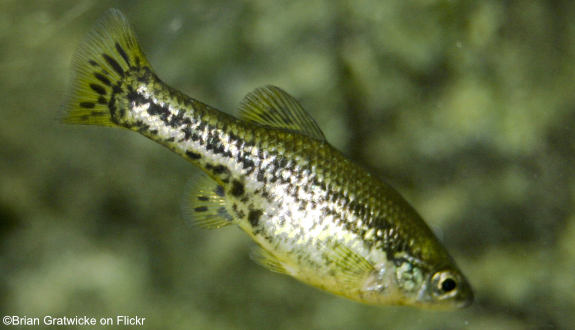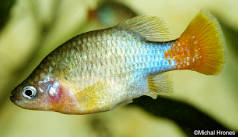

Alternative species (click on the thumbnail to see the card)
Names
Scientific name
Ameca splendens
Common name
Butterfly Goodeid
Butterfly splitfin
Origin

Origin: Central America (Mexico: Rio Ameca and Teuchitlan)
Biotope: Non specific
Dimorphism
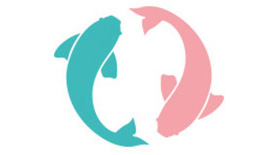
Females are larger and more bouncy than males. Males are more intensely colored than females and their caudal and anal fins are bordered with black and yellow
Group
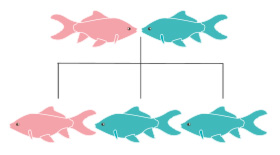
Goodeidae
Volume

150 L / 33 Imp gal / 40 US gal
Parameters

T°: 25 to 28°C or 77 to 82°F
pH: 7 to 8
Hardness: 15 to 30°dGH
Difficulty

Easy
Size

Male: 6-8cm (2.4-3.2") / Female: 10-12cm (4-4.8")
Longevity

3 to 5 years
Living zone
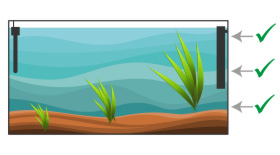
Middle and depth
Individuals

8
Food
How to feed the Butterfly Goodeid?
Food
How to feed the Butterfly Goodeid?
Even if in the wild this fish is mainly vegetarian, in captivity it is more omnivorous with a strong vegetarian tendency. Indeed, if it lacks plants in its diet, it will attack the most fragile plants in your aquarium.
These fish accept all types of food easily. Vary the menus as much as possible in order to avoid deficiencies and promote a beautiful coloration. Plants will thus constitute the major part of their food. Offer seaweed (nori, spirulina...), spinach, salad, vegetable flakes... Supplement with small prey such as mosquito larvae, artemia, daphnia, mud worms, tubifex or Grindal worms.
Behavior
What kind of behavior does the Butterfly Goodeid have?
Behavior
What kind of behavior does the Butterfly Goodeid have?
It is a sociable fish with its congeners but a little territorial. Excellent swimmer and far from being shy, it is always on the move and seems never to rest. It therefore needs an aquarium with a nice front length (at least 1 meter or 40") to spend its energy properly. The dominant males divide the surface at the bottom of the aquarium into different territories that they defend. Dominant males and females evolve more in the middle of the aquarium.
Beware, it can happen that they chew the long fins of their roommates.
Very fond of greenery, the Ameca does not hesitate to attack algae, especially filamentous green algae: a great ally! However, it should not be chosen solely for this "function" as it has its own maintenance requirements to meet!
During fights, their eyes can change color: a vertical black line across the iris appears. The defeated fish has a completely black eye as well as those of equal strength (no winner). In reality, the completely black color of the eyes is an indication that the fish gives up the fight.
Cohabitation
Who can live with the Butterfly Goodeid?
Cohabitation
Who can live with the Butterfly Goodeid?
It cannot be said that this species is very suitable for community aquariums. Indeed, their behavior takes an aspect really very close to the natural one only from about twenty specimens, which already makes a rather consequent population.
Its restless temperament can disturb smaller, shy or calm fish. Similarly, its teasing and fin nibbling side still limits the possibilities of cohabitation. In short, it is quite aggressive with many species. Therefore, we advise you to keep this species in a specific aquarium.
The cohabitation with other viviparous species is possible provided that the colors they present are not too bright (avoid male guppies or red xyphos for example). Fish with a strong character are also possible like big bearded fish, cichlids or other Goodeidae like Xenotoca eiseni.
Breeding
How to breed the Butterfly Goodeid?
Breeding
How to breed the Butterfly Goodeid?
Very easy because it is spontaneous from the moment the two sexes are brought together and the conditions are favorable. This species is a viviparous, that is to say that the eggs develop in the belly of the female and hatch there. As a result, they are perfect little fish that are already formed and autonomous and are born at birth.
Births are very regular and a female can produce 7 to 20 fry every 50 to 70 days. The small fish are born already formed and measure about 1 cm (0.4"). They are autonomous and swim freely.
There is no parental predation on the fry, so you can leave them together without any problem.
What is going to be difficult to manage is not finally to obtain a reproduction, but rather to avoid overpopulation. Indeed, with a frenetic birth rate, your aquarium may quickly become saturated. Give the young regularly to other aquarists.
Feed the fry: artemia nauplias then after a week complete with spinach puree.
Its aquarium
Which aquarium for the Butterfly Goodeid?
Its aquarium
Which aquarium for the Butterfly Goodeid?
In the wild, this species was mainly encountered in fast flowing streams with sandy bottoms and richly planted scenery. To reproduce this environment in an aquarium, choose a powerful filtration (3 times the volume of the aquarium per hour) and especially stir the surface.
Plant your aquarium a lot but still leave enough room for swimming: plant on the bottom and sides of the tank. Complete the decoration with rocks or roots.
As far as water quality is concerned, Amecas do not tolerate nitrates well. To avoid this accumulation of pollutant, change 10% of the volume once a week. To obtain a rather hard water (hardness higher than 20°dGH) add one teaspoon of non-fluorinated salt for 10 L / 2.2 Imp gal / 2.7 US gal of water (to be adjusted according to the parameters of your tap water). For example, you can use Preis Salt originally intended for Discus aquariums. Another possibility: 10% of the volume will be sea water.
Good To know
Find all additional information!
Good To know
Find all additional information!
Unfortunately, this species completely disappeared from its natural environment in 1996 (IUCN status: extinct). This fish thus exists only in the aquarium trade. A species to be preserved: to your tanks!
Robust and easy to reproduce, this species is perfectly adapted to beginners in aquaristics.
There is a commercial yellow variant of the Ameca, however less bright than the natural coloration.
Its name "Ameca" comes from the Rio ameca where it lived and "splendens" means "splendid", in all modesty :)
Yours photos!
Comments
Sort by:
Please login to post comments
